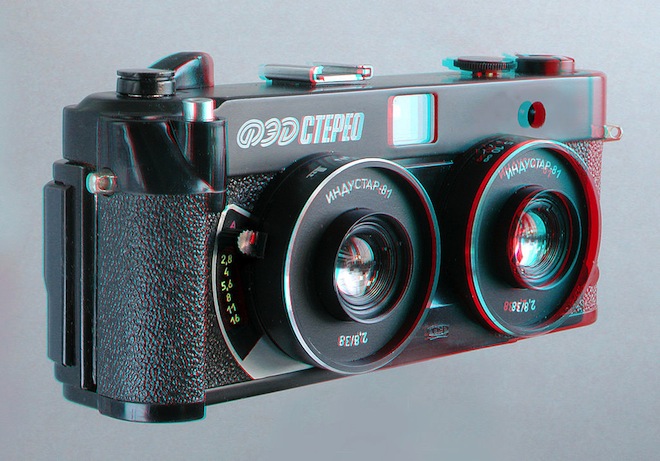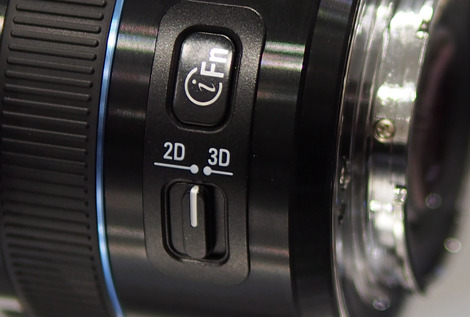3D was oppressive, attention seeking and now 3D is dead. Quietly dropped by all consumer electronics firm if the 2013 CES is anything to go by.
Or is it?
The great thing about a big cinema screen is that you get to choose what to look at and that the characters compete for your focus, allowing the story to draw you in. 3D was an attempt to do this the artless way. In 3D the scenery competes for your attention with tree branches flying out of the screen. Swooping CGI leaping at you for your undivided attention. It takes you away from the story, the characters and the emotion and in the HFR 3D version of The Hobbit nobody even laughed at the jokes as a result.
The emotional disconnect to the material was keenly felt even at The Academy since it picked up no major nominations at the Oscars.
Poor sales of 3D TVs have lead to record losses for Japanese giants Sony, Panasonic and Sharp. Now it seems they have abandoned the sinking ship. CES 2013 was almost devoid of 3D technology or new 3D products.
Let’s just touch on the losses of Japanese tech firms a moment. Their official reasons include a lot of excuses such as a high yen and poor economy but in my view the real reason they are losing money is a complete failure to capture our imaginations or to give us what we need. 1080p is an old technology and it has been flogged to death by firms for well over a decade. Instead of moving onto 4K earlier, they tried to maintain the value of cheap to produce 1080p TVs by adding 3D. This is cheap to do, since 3D is essentially a firmware update and a pair of $1 plastic glasses. No matter how smartly you dress up the mutton, that is what it is. Mutton.
Above: 3D still has a future in amusement ride style movie making and thrill seeking… Maybe
So now 7 years after Red began to push 4K technology, the Japanese manufacturers have decided to catch up and are going all out to bring us extremely pricey 4K displays and OLED panels. These we actually want but it remains to be seen if it will save Sharp who have ‘material concerns about their existence’ and Panasonic who made a loss recently similar in size to the one Tepco made after the Fukushima disaster.
Things are going to get worse sadly because 4K is not a magic bullet either.
4K is a hard sell when most people are watching movies on small laptop screens via internet connections which aren’t even capable of streaming the huge amount of data 4K pumps out. It is a hard sell when there’s almost no 4K content around, no 4K Playstation or consumer 4K video cameras. It is particularly difficult to convince the average family to invest such a large amount of money in 4K content and hardware for their living room when you can’t tell the difference between upscaled 1080p and native 4K on a 50″ display at typical viewing distances.
I really do fear for the TV industry. There’s a shift in viewing habits away from the communal lounge TV because of the internet.
To lose such large companies would be a tragedy for the technology world and the worldwide economy. They really need to sort this problem out.
In my opinion the rush to 3D was a waste of money on an epic scale. Despite having the two most popular film franchises of the last 10 years as torch bearers for 3D, it still didn’t take off. At this year’s CES there was a huge shift in focus away from 3D and onto 4K.
Above: one of the few 3D products at CES 2013, a lens by Samsung for their new heavily Sony NEX 7 inspired NX300 mirrorless camera
Underpinning the failure of customers to buy into 3D is that it is an artistic failure. Audiences don’t like it, aren’t moved by it.
These programmers creating Sony MotionFlow, 200hz firmware and 3D are failing with the artistic and psychological side of electronics. Once the psychological link between man and machine is broken, as it is with 3D, you don’t have a consumer entertainment product. You have something that annoys and frustrates at every opportunity. Many companies have realised this – Nintendo pioneered a lenticular 3D screen for their 3DS and quietly dropped it when it came to the lovely 2D panel on the Wii U. Panasonic made a creative 3D lens for Micro Four Thirds, the first turned out to be last.
It’s not to say there haven’t been great talent involved in making 3D technology and content and that 3D doesn’t have a future. It does have a future but the technology as it stands just doesn’t work properly, certainly not for all kinds of content and most kinds of viewers.
CES 2013 however is just a sign that it might be dying, not a sign that it is now officially dead.
Is 3D just taking a break?
I think this is unlikely. 3D has been a flash in the pan before. Last year the Olympics were filmed partly in 3D by Panasonic and I am sure people in the home do watch 3D content when they can find it. But I just don’t think the level of investment in 3D has been matched by the revenues yet.
With the exception of a few films that would have broken box offices records regardless of how they were shot, I don’t think people are rushing to spend money on 3D hardware or content. 3D isn’t really turning around the cinema or TV industry is it? So next time an entire industry makes a joint decision to go with a technology that nobody really likes, perhaps they could think twice about it and avoid the huge financial losses that result.





